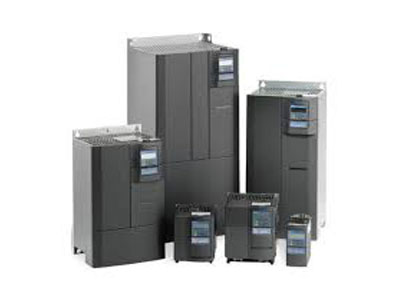Key Takeaway
Three types of VFDs exist: Voltage-Source Inverter (VSI), Current-Source Inverter (CSI), and Pulse Width Modulation Inverter (PWM). VSI is the most common type. It uses a simple diode circuit to convert AC to DC and includes a capacitor that stores energy. CSI, on the other hand, controls the current to the motor and is typically used in high-power applications. PWM VFDs adjust the motor speed by changing the voltage and frequency supplied to the motor. Each type has its specific applications and benefits, making them essential for various industrial processes.
Overview of Different VFD Types
VFDs come in various forms, each with unique characteristics suited for specific applications. The main types include Current Source Inverter (CSI) VFDs, Voltage Source Inverter (VSI) VFDs, and Pulse Width Modulation (PWM) VFDs. This guide will walk you through these types, helping you understand their functions and advantages.

Current Source Inverter (CSI) VFDs
Current Source Inverter (CSI) VFDs are renowned for their robustness and reliability. They are specifically designed to handle high-power applications, making them an excellent choice for heavy-duty motors. These VFDs convert AC to DC using a rectifier and then transform the DC back to AC through an inverter. This process ensures precise control over motor speed and torque.
One of the key advantages of CSI VFDs is their ability to manage large current loads efficiently. This makes them ideal for industries where high power and consistent performance are crucial. For instance, in industries like steel manufacturing or mining, where motors need to operate under strenuous conditions, CSI VFDs prove their worth by maintaining stability and reliability.
However, it’s important to note that CSI VFDs come with certain drawbacks. Their large size can be a concern, especially in installations where space is limited. Additionally, they tend to be more expensive compared to other types of VFDs. This higher cost can be a deciding factor for some users, particularly those with budget constraints.
Voltage Source Inverter (VSI) VFDs
Voltage Source Inverter (VSI) VFDs are essential tools in modern industrial applications, offering both versatility and efficiency. These devices convert AC power to DC and then back to AC at the desired frequency, allowing for precise motor control. This conversion process involves rectifiers and inverters, making VSI VFDs capable of handling various voltage levels, which is particularly useful in manufacturing and automation industries.
One of the key benefits of VSI VFDs is their compact design. This makes them easy to integrate into different systems without taking up too much space. They are also cost-effective, which means you can achieve efficient motor control without a significant investment. This balance of cost and performance is crucial for maintaining competitive operations.
VSI VFDs provide smooth motor control, which reduces mechanical stress on the motors and extends their lifespan. This feature is particularly beneficial in applications where precise speed control is necessary, such as conveyor systems, pumps, and fans. The ability to handle a wide range of voltages makes VSI VFDs a versatile choice, adaptable to various industrial environments.
Pulse Width Modulation (PWM) VFDs
Pulse Width Modulation (PWM) Variable Frequency Drives (VFDs) are at the forefront of VFD technology, offering unmatched motor performance and energy efficiency. PWM VFDs use high-speed switching to generate a precise and stable output voltage, which is crucial for applications requiring exact speed and torque control. This makes them ideal for conveyor systems, pumps, and fans.
Their ability to reduce harmonic distortion significantly improves power quality, benefiting both the equipment and the power grid. The enhanced motor control provided by PWM VFDs ensures smoother operation, reducing mechanical stress and extending the lifespan of motors. This translates to lower maintenance costs and improved system reliability, which are essential factors in industrial applications.
Moreover, PWM VFDs are highly flexible and can be easily integrated into various control systems. This adaptability makes them a preferred choice in modern industrial environments where efficiency and precision are paramount. By investing in PWM VFDs, industries can achieve significant energy savings, reducing operational costs and promoting sustainability.
Comparative Analysis of VFD Types
When comparing CSI, VSI, and PWM VFDs, several factors come into play that are crucial for industrial applications. Current Source Inverter (CSI) VFDs are robust and handle high power levels efficiently. They are ideal for heavy-duty applications, but their size and cost can be significant drawbacks. Imagine a massive piece of machinery that’s reliable but takes up a lot of space and budget. That’s CSI for you.
On the other hand, Voltage Source Inverter (VSI) VFDs strike a good balance between cost and performance. They are versatile and can be used in various industrial applications, from simple conveyor belts to more complex machinery. VSI VFDs are like the all-rounders of the VFD world – they fit in well almost anywhere without breaking the bank.
Then we have Pulse Width Modulated (PWM) VFDs, which are known for their precision and efficiency. These VFDs are excellent for applications that require precise control and high efficiency, like CNC machines. However, they might need more complex control systems, making them a bit challenging to implement initially.
In choosing the right VFD for your needs, consider the specific requirements of your application. Are you looking for high power and durability? Go for CSI. Need a versatile and cost-effective solution? VSI is your best bet. Looking for precision and efficiency? PWM should be your choice. Understanding these differences helps in ensuring optimal performance and efficiency in your operations.
Conclusion
Selecting the right VFD type depends on your specific application requirements. CSI VFDs are best for heavy-duty applications, VSI VFDs offer versatility and cost-effectiveness, and PWM VFDs provide precision and efficiency. Assess your needs, consider the characteristics of each VFD type, and choose the one that best matches your industrial application. This decision will ensure reliable performance, energy savings, and enhanced control over your motor operations.
